S-IC Built For Apollo 19

S-IC Built for Apollo 19
by Ian E. Abbott
More Posts from Evisno and Others

9 Squares 8
Top: David Stanfield, Skip Hursh, Jamie Muntean Middle: David Urbinati, Al Boardman, Jake Williams Bottom: Riccardo Albertini, Bee Grandinetti, Qais Sarhan
About the project
Largest Batch of Earth-size, Habitable Zone Planets
Our Spitzer Space Telescope has revealed the first known system of seven Earth-size planets around a single star. Three of these planets are firmly located in an area called the habitable zone, where liquid water is most likely to exist on a rocky planet.

This exoplanet system is called TRAPPIST-1, named for The Transiting Planets and Planetesimals Small Telescope (TRAPPIST) in Chile. In May 2016, researchers using TRAPPIST announced they had discovered three planets in the system.

Assisted by several ground-based telescopes, Spitzer confirmed the existence of two of these planets and discovered five additional ones, increasing the number of known planets in the system to seven.

This is the FIRST time three terrestrial planets have been found in the habitable zone of a star, and this is the FIRST time we have been able to measure both the masses and the radius for habitable zone Earth-sized planets.
All of these seven planets could have liquid water, key to life as we know it, under the right atmospheric conditions, but the chances are highest with the three in the habitable zone.

At about 40 light-years (235 trillion miles) from Earth, the system of planets is relatively close to us, in the constellation Aquarius. Because they are located outside of our solar system, these planets are scientifically known as exoplanets. To clarify, exoplanets are planets outside our solar system that orbit a sun-like star.

In this animation, you can see the planets orbiting the star, with the green area representing the famous habitable zone, defined as the range of distance to the star for which an Earth-like planet is the most likely to harbor abundant liquid water on its surface. Planets e, f and g fall in the habitable zone of the star.
Using Spitzer data, the team precisely measured the sizes of the seven planets and developed first estimates of the masses of six of them. The mass of the seventh and farthest exoplanet has not yet been estimated.

For comparison…if our sun was the size of a basketball, the TRAPPIST-1 star would be the size of a golf ball.
Based on their densities, all of the TRAPPIST-1 planets are likely to be rocky. Further observations will not only help determine whether they are rich in water, but also possibly reveal whether any could have liquid water on their surfaces.
The sun at the center of this system is classified as an ultra-cool dwarf and is so cool that liquid water could survive on planets orbiting very close to it, closer than is possible on planets in our solar system. All seven of the TRAPPIST-1 planetary orbits are closer to their host star than Mercury is to our sun.

The planets also are very close to each other. How close? Well, if a person was standing on one of the planet’s surface, they could gaze up and potentially see geological features or clouds of neighboring worlds, which would sometimes appear larger than the moon in Earth’s sky.

The planets may also be tidally-locked to their star, which means the same side of the planet is always facing the star, therefore each side is either perpetual day or night. This could mean they have weather patterns totally unlike those on Earth, such as strong wind blowing from the day side to the night side, and extreme temperature changes.

Because most TRAPPIST-1 planets are likely to be rocky, and they are very close to one another, scientists view the Galilean moons of Jupiter – lo, Europa, Callisto, Ganymede – as good comparisons in our solar system. All of these moons are also tidally locked to Jupiter. The TRAPPIST-1 star is only slightly wider than Jupiter, yet much warmer.
How Did the Spitzer Space Telescope Detect this System?
Spitzer, an infrared telescope that trails Earth as it orbits the sun, was well-suited for studying TRAPPIST-1 because the star glows brightest in infrared light, whose wavelengths are longer than the eye can see. Spitzer is uniquely positioned in its orbit to observe enough crossing (aka transits) of the planets in front of the host star to reveal the complex architecture of the system.

Every time a planet passes by, or transits, a star, it blocks out some light. Spitzer measured the dips in light and based on how big the dip, you can determine the size of the planet. The timing of the transits tells you how long it takes for the planet to orbit the star.

The TRAPPIST-1 system provides one of the best opportunities in the next decade to study the atmospheres around Earth-size planets. Spitzer, Hubble and Kepler will help astronomers plan for follow-up studies using our upcoming James Webb Space Telescope, launching in 2018. With much greater sensitivity, Webb will be able to detect the chemical fingerprints of water, methane, oxygen, ozone and other components of a planet’s atmosphere.
At 40 light-years away, humans won’t be visiting this system in person anytime soon…that said…this poster can help us imagine what it would be like:

Make sure to follow us on Tumblr for your regular dose of space: http://nasa.tumblr.com
Solar System: Things to Know This Week
Mark your calendars for summer 2018: That’s when we’re launching a spacecraft to touch the sun.
In honor of our first-ever mission to the heart of the solar system, this week we’re delving into the life and times of this powerful yellow dwarf star.

1. Meet Parker
Parker Solar Probe, our first mission to go to the sun, is named after Eugene Parker, an American astrophysicist who first theorized that the sun constantly sends out a flow of particles and energy called the solar wind. This historic mission will explore one of the last regions of the solar system to be visited by a spacecraft and help scientists unlock answers to questions they’ve been pondering for more than five decades.

2. Extra SPF, Please
Parker Solar Probe will swoop within 4 million miles of the sun’s surface, facing heat and radiation like no spacecraft before it. The mission will provide new data on solar activity to help us better understand our home star and its activity - information that can improve forecasts of major space-weather events that could impact life on Earth.

3. Majorly Massive
The sun is the center of our solar system and makes up 99.8 percent of the mass of the entire solar system. If the sun were as tall as a typical front door, Earth would be about the size of a nickel.
4. Different Spin
Since the sun is not a solid body, different parts of the sun rotate at different rates. At the equator, the sun spins once about every 25 days, but at its poles the sun rotates once on its axis every 36 Earth days.

5. Can’t Stand on It
The sun is a star and a star doesn’t have a solid surface. Rather, it’s a ball of ionized gas 92.1% hydrogen (H2) and 7.8% helium (He) held together by its own gravity.
6. Center of Attention
The sun isn’t a planet, so it doesn’t have any moons. But, the sun is orbited by eight planets, at least five dwarf planets, tens of thousands of asteroids, and hundreds of thousands to trillions of comets and icy bodies.

7. It’s Hot in There
And we mean really, really hot. The temperature at the sun’s core is about 27 million degrees Fahrenheit. However, its atmosphere, the corona, can reach temperatures of 3 million degrees. (That’s as if it got hotter the farther away you got from a fire, instead of cooler!) Parker Solar Probe will help scientists solve the mystery of why the corona’s temperature is so much higher than the surface.

8. Travel Conditions
The sun influences the entire solar system, so studying it helps us better understand the space weather that our astronauts and spacecraft travel through.
9. Life on the Sun?
Better to admire from afar. Thanks to its hot, energetic mix of gases and plasma, the sun can’t be home to living things. However, we can thank the sun for making life on Earth possible by providing the warmth and energy that supply Earth’s food chain.
10. Chance of a Lifetime
Last but not least, don’t forget that the first total solar eclipse to sweep across the U.S. from coast-to-coast since 1918 is happening on August 21, 2017. Our toolkit has you need to know to about it.
Want to learn more? Read our full list of the 10 things to know this week about the solar system HERE.
Make sure to follow us on Tumblr for your regular dose of space: http://nasa.tumblr.com
Solar System: Things to Know This Week
There’s even more to Mars.

1. Batten Down the Hatches
Good news for future astronauts: scientists are closer to being able to predict when global dust storms will strike the Red Planet. The winds there don’t carry nearly the same force that was shown in the movie “The Martian,” but the dust lofted by storms can still wreak havoc on people and machines, as well as reduce available solar energy. Recent studies indicate a big storm may be brewing during the next few months.
+ Get the full forecast

2. Where No Rover Has Gone Before
Our Opportunity Mars rover will drive down an ancient gully that may have been carved by liquid water. Several spacecraft at Mars have observed such channels from a distance, but this will be the first up-close exploration. Opportunity will also, for the first time, enter the interior of Endeavour Crater, where it has worked for the last five years. All this is part of a two-year extended mission that began Oct. 1, the latest in a series of extensions going back to the end of Opportunity’s prime mission in April 2004. Opportunity landed on Mars in January of that year, on a mission planned to last 90 Martian days (92.4 Earth days). More than 12 Earth years later, it’s still rolling.
+ Follow along + See other recent pictures from Endeavour Crater

3. An Uphill Climb
Opportunity isn’t the only NASA Mars rover getting a mission extension. On the other side of the planet, the Curiosity rover is driving and collecting samples amid some of the most scenic landscapes ever visited on Mars. Curiosity’s two-year mission extension also began Oct. 1. It’s driving toward uphill destinations, including a ridge capped with material rich in the iron-oxide mineral hematite, about a mile-and-a-half (two-and-a-half kilometers) ahead. Beyond that, there’s an exposure of clay-rich bedrock. These are key exploration sites on lower Mount Sharp, which is a layered, Mount-Rainier-size mound where Curiosity is investigating evidence of ancient, water-rich environments that contrast with the harsh, dry conditions on the surface of Mars today.
+ Learn more

4. Keep a Sharp Lookout
Meanwhile, the Mars Reconnaissance Orbiter continues its watch on the Red Planet from above. The mission team has just released a massive new collection of super-high-resolution images of the Martian surface.
+ Take a look

5. 20/20 Vision for the 2020 Rover
In the year 2020, Opportunity and Curiosity will be joined by a new mobile laboratory on Mars. In the past week, we tested new “eyes” for that mission. The Mars 2020 rover’s Lander Vision System helped guide the rocket to a precise landing at a predesignated target. The system can direct the craft toward a safe landing at its primary target site or divert touchdown toward better terrain if there are hazards in the approaching target area.
+ Get details
Discover the full list of 10 things to know about our solar system this week HERE.
Make sure to follow us on Tumblr for your regular dose of space: http://nasa.tumblr.com

I believe in free education, one that’s available to everyone; no matter their race, gender, age, wealth, etc… This masterpost was created for every knowledge hungry individual out there. I hope it will serve you well. Enjoy!
FREE ONLINE COURSES (here are listed websites that provide huge variety of courses)
Alison
Coursera
FutureLearn
open2study
Khan Academy
edX
P2P U
Academic Earth
iversity
Stanford Online
MIT Open Courseware
Open Yale Courses
BBC Learning
OpenLearn
Carnegie Mellon University OLI
University of Reddit
Saylor
IDEAS, INSPIRATION & NEWS (websites which deliver educational content meant to entertain you and stimulate your brain)
TED
FORA
Big Think
99u
BBC Future
Seriously Amazing
How Stuff Works
Discovery News
National Geographic
Science News
Popular Science
IFLScience
YouTube Edu
NewScientist
DIY & HOW-TO’S (Don’t know how to do that? Want to learn how to do it yourself? Here are some great websites.)
wikiHow
Wonder How To
instructables
eHow
Howcast
MAKE
Do it yourself
FREE TEXTBOOKS & E-BOOKS
OpenStax CNX
Open Textbooks
Bookboon
Textbook Revolution
E-books Directory
FullBooks
Books Should Be Free
Classic Reader
Read Print
Project Gutenberg
AudioBooks For Free
LibriVox
Poem Hunter
Bartleby
MIT Classics
Many Books
Open Textbooks BCcampus
Open Textbook Library
WikiBooks
SCIENTIFIC ARTICLES & JOURNALS
Directory of Open Access Journals
Scitable
PLOS
Wiley Open Access
Springer Open
Oxford Open
Elsevier Open Access
ArXiv
Open Access Library
LEARN:
1. LANGUAGES
Duolingo
BBC Languages
Learn A Language
101languages
Memrise
Livemocha
Foreign Services Institute
My Languages
Surface Languages
Lingualia
OmniGlot
OpenCulture’s Language links
2. COMPUTER SCIENCE & PROGRAMMING
Codecademy
Programmr
GA Dash
CodeHS
w3schools
Code Avengers
Codelearn
The Code Player
Code School
Code.org
Programming Motherf*?$%#
Bento
Bucky’s room
WiBit
Learn Code the Hard Way
Mozilla Developer Network
Microsoft Virtual Academy
3. YOGA & MEDITATION
Learning Yoga
Learn Meditation
Yome
Free Meditation
Online Meditation
Do Yoga With Me
Yoga Learning Center
4. PHOTOGRAPHY & FILMMAKING
Exposure Guide
The Bastards Book of Photography
Cambridge in Color
Best Photo Lessons
Photography Course
Production Now
nyvs
Learn About Film
Film School Online
5. DRAWING & PAINTING
Enliighten
Ctrl+Paint
ArtGraphica
Google Cultural Institute
Drawspace
DragoArt
WetCanvas
6. INSTRUMENTS & MUSIC THEORY
Music Theory
Teoria
Music Theory Videos
Furmanczyk Academy of Music
Dave Conservatoire
Petrucci Music Library
Justin Guitar
Guitar Lessons
Piano Lessons
Zebra Keys
Play Bass Now
7. OTHER UNCATEGORIZED SKILLS
Investopedia
The Chess Website
Chesscademy
Chess.com
Spreeder
ReadSpeeder
First Aid for Free
First Aid Web
NHS Choices
Wolfram Demonstrations Project
Please feel free to add more learning focused websites.
*There are a lot more learning websites out there, but I picked the ones that are, as far as I’m aware, completely free and in my opinion the best/ most useful.
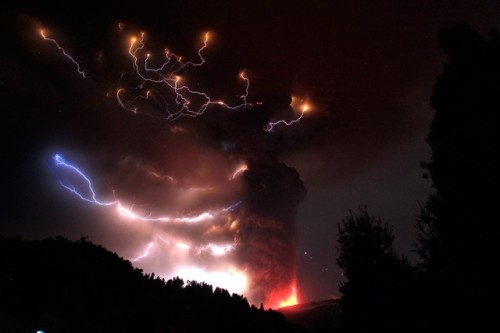

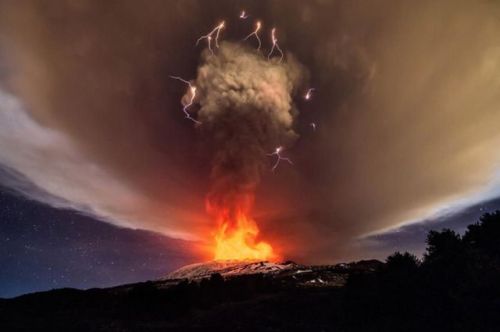
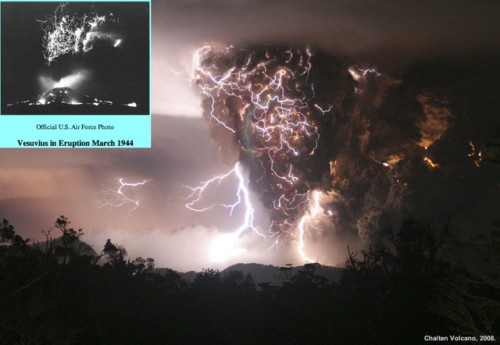

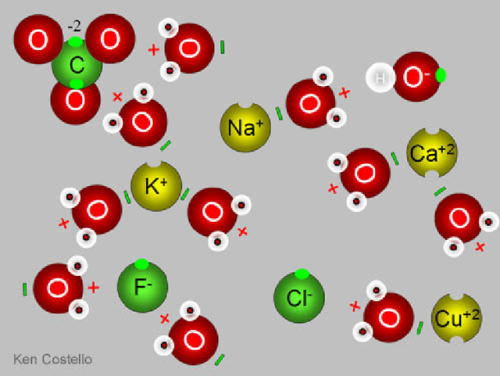

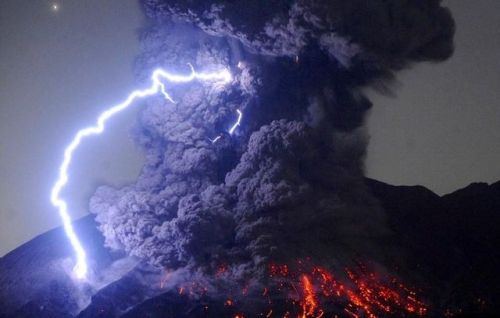
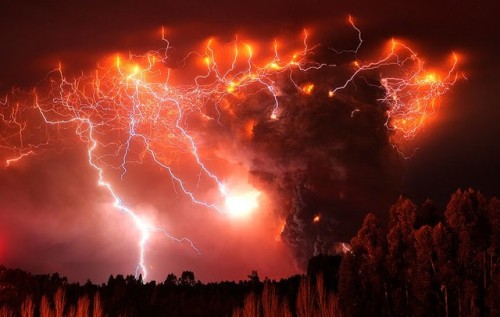
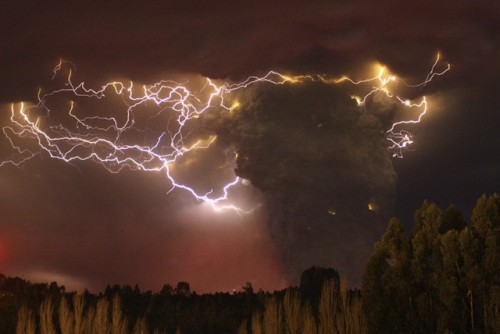
How Do Volcanoes Make Lightning?
“Volcanic lightning appears to occur most frequently around volcanoes with large ash plumes, particularly during active stages of the eruption, where flowing, molten lava creates the largest temperature gradients. The phenomena of lightning has been exquisitely recorded around a number of recent volcanic eruptions, including Iceland’s Eyjafjallajökull, Japan’s Sakurajima, Italy’s Mt. Etna, and Chile’s Puyehue, Calbuco and Chaiten volcanoes. But what you may not know is this phenomenon was not only captured during Mt. Vesuvius’ last eruption in 1944, but was accurately described nearly 2,000 years ago when it erupted all the way back in the year 79!”
Volcanoes are some of the most potentially destructive natural phenomena known to occur on our world. The most violent eruptions feature not only lava, but soot, ash, volatile gases, and even enormous chunks of rock hurled great distances. What you might not realize, however, is just how frequently these eruptions are accompanied by another spectacular show: volcanic lightning. Lightning isn’t only found in thunderstorms or other great electrical discharges between the clouds and the ground, but is produced in volcanic eruptions all throughout the world, and throughout history as well. After countless generations, where we wondered what could produce such an unusual but spectacular show, we’ve finally figured it out.
Come get the science behind how volcanoes make lightning, and enjoy some of the greatest photographs of this phenomena humanity’s ever taken!
Habe Mut, dich deines eigenen Verstandes zu bedienen.
Have the courage to use your own mind.
Immanuel Kant (1724 – 1804), German philosopher
(via jedentageinzitat)

Pitch Black: Cosmic Clumps Cast the Darkest Shadows
Astronomers have found cosmic clumps so dark, dense and dusty that they throw the deepest shadows ever recorded. Infrared observations from NASA’s Spitzer Space Telescope of these blackest-of-black regions paradoxically light the way to understanding how the brightest stars form.
The clumps represent the darkest portions of a huge, cosmic cloud of gas and dust located about 16,000 light-years away. A new study takes advantage of the shadows cast by these clumps to measure the cloud’s structure and mass.
Continue Reading
‘아렌델’은 빅뱅 이후 첫 10억년 이내에 존재했던 별입니다. 우리 지구에 닿기까지 129억년이나 걸린 것이지요!
우리 태양보다 적어도 50배 크고, 몇백만 배 밝아요. 평소에는 지구에서 볼 수 없지만, 우리와 ‘아렌델’ 사이에 있는 은하단이 렌즈 역할을 했습니다!
A View into the Past

Our Hubble Space Telescope just found the farthest individual star ever seen to date!
Nicknamed “Earendel” (“morning star” in Old English), this star existed within the first billion years after the universe’s birth in the big bang. Earendel is so far away from Earth that its light has taken 12.9 billion years to reach us, far eclipsing the previous single-star record holder whose light took 9 billion years to reach us.
Though Earendel is at least 50 times the mass of our Sun and millions of times as bright, we’d normally be unable to see it from Earth. However, the mass of a huge galaxy cluster between us and Earendel has created a powerful natural magnifying glass. Astronomers expect that the star will be highly magnified for years.
Earendel will be observed by NASA’s James Webb Space Telescope. Webb's high sensitivity to infrared light is needed to learn more about this star, because its light is stretched to longer infrared wavelengths due to the universe's expansion.

WORKING ON CHRISTMAS: While the beautiful Earth looms in the background, astronaut Steven Smith stands on the mobile foot restraint at the end of the remote manipulator system as he makes repairs to the Hubble Space Telescope, Dec. 24-25, 1999. (NASA)
-
 rlfsoso liked this · 8 years ago
rlfsoso liked this · 8 years ago -
 photopraxis reblogged this · 8 years ago
photopraxis reblogged this · 8 years ago -
 askarpund reblogged this · 8 years ago
askarpund reblogged this · 8 years ago -
 subseensociety liked this · 8 years ago
subseensociety liked this · 8 years ago -
 markparham reblogged this · 8 years ago
markparham reblogged this · 8 years ago -
 ivanjerkhov liked this · 8 years ago
ivanjerkhov liked this · 8 years ago -
 thunderoad reblogged this · 8 years ago
thunderoad reblogged this · 8 years ago -
 mosleymoe liked this · 8 years ago
mosleymoe liked this · 8 years ago -
 danbarrett88 liked this · 8 years ago
danbarrett88 liked this · 8 years ago -
 metalzoic liked this · 8 years ago
metalzoic liked this · 8 years ago -
 evisno reblogged this · 8 years ago
evisno reblogged this · 8 years ago -
 quantum-mecha reblogged this · 8 years ago
quantum-mecha reblogged this · 8 years ago -
 profanepenguin liked this · 8 years ago
profanepenguin liked this · 8 years ago -
 collectivesighs liked this · 8 years ago
collectivesighs liked this · 8 years ago -
 good-and-colorful liked this · 8 years ago
good-and-colorful liked this · 8 years ago -
 worldofponies reblogged this · 8 years ago
worldofponies reblogged this · 8 years ago -
 worldofponies liked this · 8 years ago
worldofponies liked this · 8 years ago -
 quantum-mecha liked this · 8 years ago
quantum-mecha liked this · 8 years ago -
 andysgra reblogged this · 8 years ago
andysgra reblogged this · 8 years ago -
 andysgra liked this · 8 years ago
andysgra liked this · 8 years ago -
 stardustperfection liked this · 8 years ago
stardustperfection liked this · 8 years ago -
 stardustperfection reblogged this · 8 years ago
stardustperfection reblogged this · 8 years ago -
 realitychemist reblogged this · 8 years ago
realitychemist reblogged this · 8 years ago -
 c3p-mo reblogged this · 8 years ago
c3p-mo reblogged this · 8 years ago -
 the-cat-from-outer-space-blog liked this · 8 years ago
the-cat-from-outer-space-blog liked this · 8 years ago -
 edwhiteandblue liked this · 8 years ago
edwhiteandblue liked this · 8 years ago -
 thelabyrinthmaker reblogged this · 8 years ago
thelabyrinthmaker reblogged this · 8 years ago -
 nathanielbuildsatesseract reblogged this · 8 years ago
nathanielbuildsatesseract reblogged this · 8 years ago -
 mississippiriverrat liked this · 8 years ago
mississippiriverrat liked this · 8 years ago -
 cyclic-origin reblogged this · 8 years ago
cyclic-origin reblogged this · 8 years ago -
 kisaayano reblogged this · 8 years ago
kisaayano reblogged this · 8 years ago -
 shedaltha reblogged this · 8 years ago
shedaltha reblogged this · 8 years ago -
 jockbots liked this · 8 years ago
jockbots liked this · 8 years ago -
 jacquelinesantiago liked this · 8 years ago
jacquelinesantiago liked this · 8 years ago -
 vastormrunner reblogged this · 8 years ago
vastormrunner reblogged this · 8 years ago -
 see-you-around-kiddo liked this · 8 years ago
see-you-around-kiddo liked this · 8 years ago -
 coffeeandcommunism reblogged this · 8 years ago
coffeeandcommunism reblogged this · 8 years ago -
 quasigeostrophy liked this · 8 years ago
quasigeostrophy liked this · 8 years ago -
 ictstudies-blog liked this · 8 years ago
ictstudies-blog liked this · 8 years ago